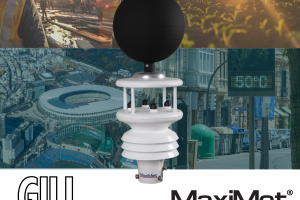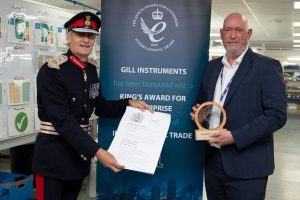Robust ultrasonic anemometers from Gill Instruments are withstanding the elements on data buoy applications across the World’s oceans.
Gill WindSonic ultrasonic anemometers are renowned for reliability in harsh environments and are used worldwide as part of comprehensive weather buoy networks, to provide high-quality wind data on the oceans climates.
A small number of typical applications are outlined below:
Construction in Uruguay
The 100th Watchkeeper buoy, fitted with the WindSonic wind speed and direction sensor, has been supplied to a major Liquid Natural Gas terminal project in Uruguay. The buoys provide environmental data to support the construction of the new terminal. The WindSonics provide the construction operators with valuable real-time wind speed and direction data for navigational and operational purposes. Along with the wind speed and direction data provided by the WindSonic, the Watchkeeper buoys provide air temperature, relative humidity, atmospheric pressure and precipitation monitoring.
Bay of Biscay to North Atlantic
Buoys are currently monitoring weather and tidal conditions in an area extending from the Bay of Biscay to North West Scotland. Amongst the meteorological instruments capturing this valuable weather data is the WindSonic ultrasonic anemometer. Weather conditions in this area of the sea can be extreme, subjecting the buoys and the sensors to waves recorded at heights of over 20 metres. Chosen for its robust, corrosion-free housing and unparalleled reliability, the maintenance free solid-state wind sensor is mounted within a strong protection rig at the top of the buoy, allowing exposure to the elements. Data collected from the WindSonic is used by the UK Met Office for weather forecasting and general monitoring.
Monitoring abnormal weather in the Northeast Pacific
The WindSonic is being used as part of a sensor suite to provide durable weather monitoring and climate analysis to the Ocean Climate Stations in the Northeast Pacific. The buoys, which were initially installed at Ocean Station Papa to monitor ocean-atmosphere interactions, carbon uptake and ocean acidification, are currently being used to monitor an area of warm surface water. The water area, also known as ‘The Blob’ reported abnormal temperatures in February, measuring 3°C warmer than the usual, which is continuing throughout the summer months. Monitoring this irregular weather pattern, using some of the most reliable and accurate weather sensors, is important as the implications may affect the marine ecosystem and the weather in the Pacific Northwest.Weather safety in the Irish Sea
Since 2009, the next generation platforms within the Irish Weather Buoy Network have been installed to upgrade the previously used buoys and to provide additional Met-Ocean parameters. The most notable upgrade included the installation of Gill WindSonic ultrasonic wind sensors which replaced a more fragile wind vane. Real-time data collected from the instruments on the Wavescan buoys is transmitted to a base station in Met Eireann via email and is used to improve weather forecasts and safety around the Irish Sea. The WindSonic and other sensors with the network provide vital data use for gale and swell warnings, shipping bulletins and weather forecasts as well as research information and general public interest.Dependable performance
Gill’s WindSonic range of anemometers has been installed into some of the marine industry’s most strenuous applications due to its proven solid-state technology. Resilient to harsh environments, Gill wind speed and direction sensors are low cost, low maintenance devices, providing fit-and-forget installation and mast mounting, reducing offshore service costs.
WindSonic sensors are suitable for an unlimited range of marine based applications and deliver real-time, accurate measurement data and a truly dependable performance on buoy, port and vessel applications.









